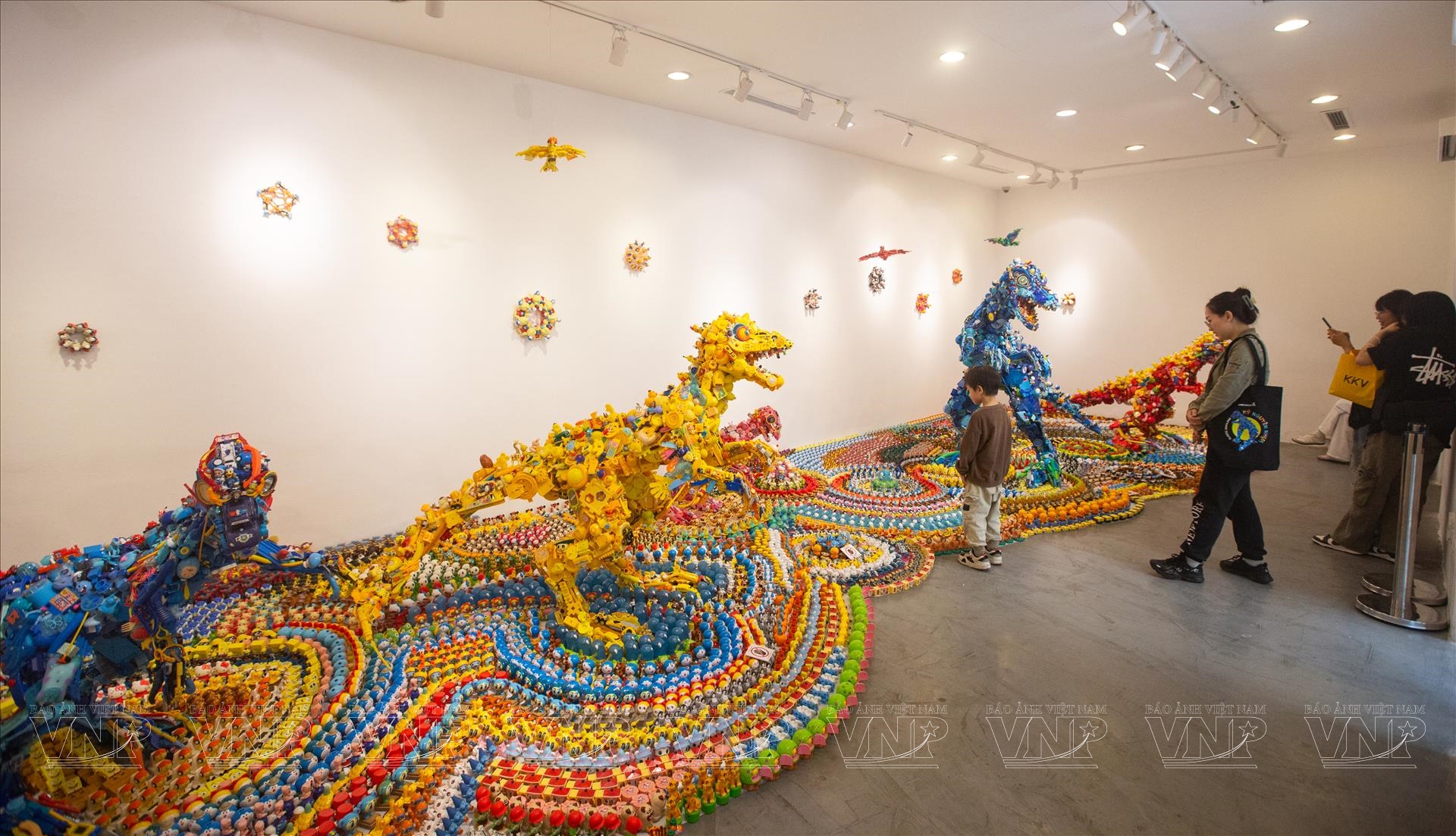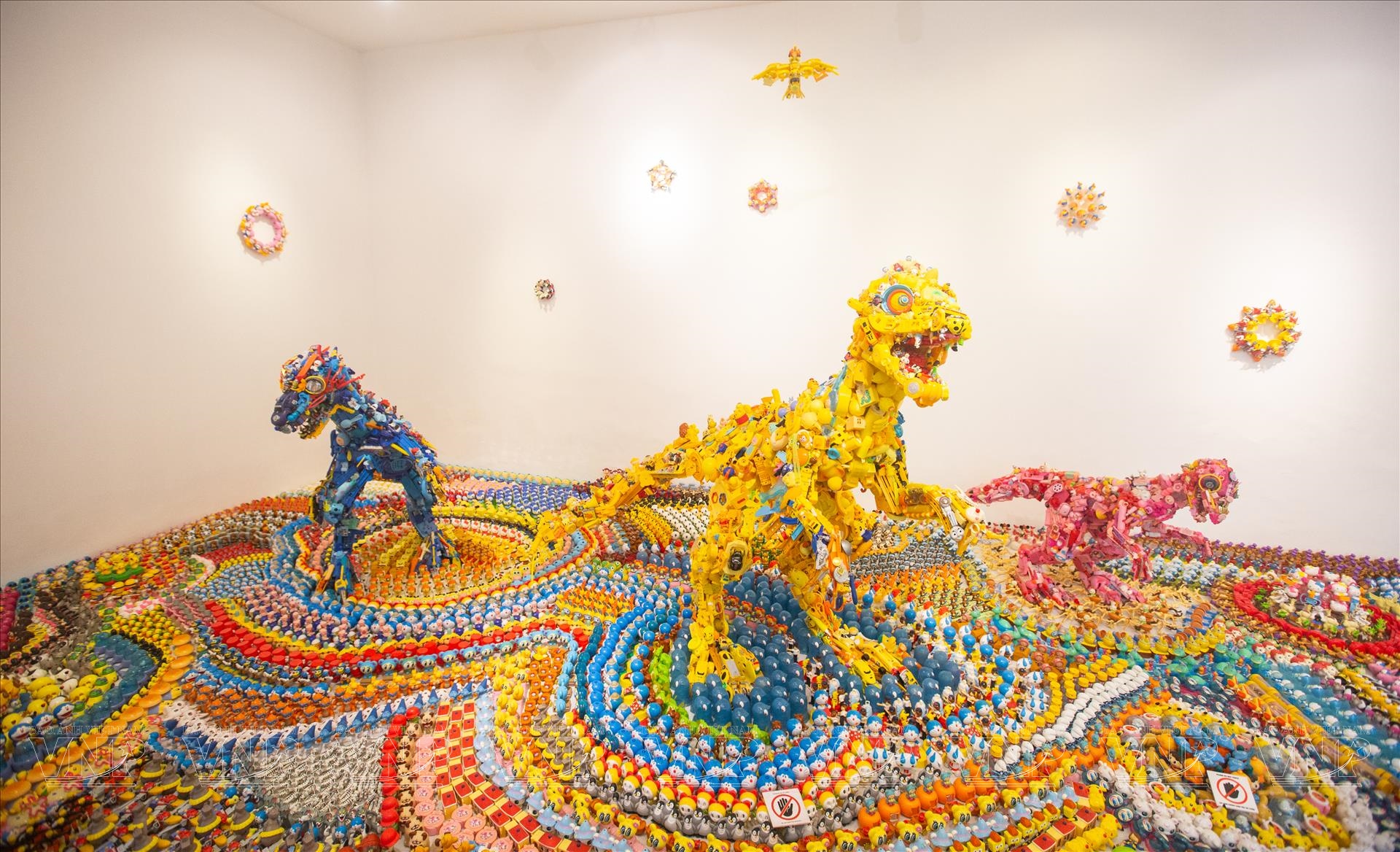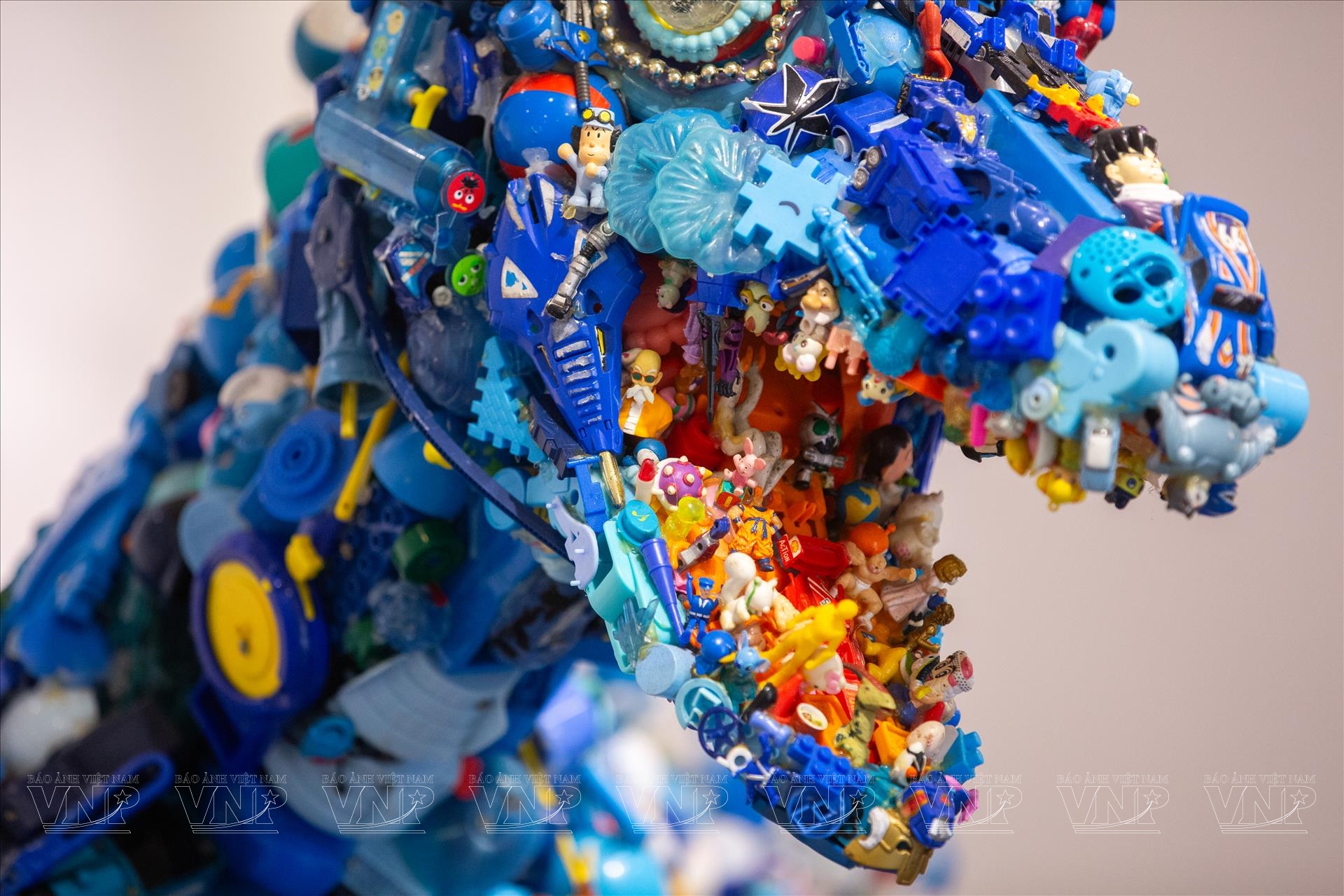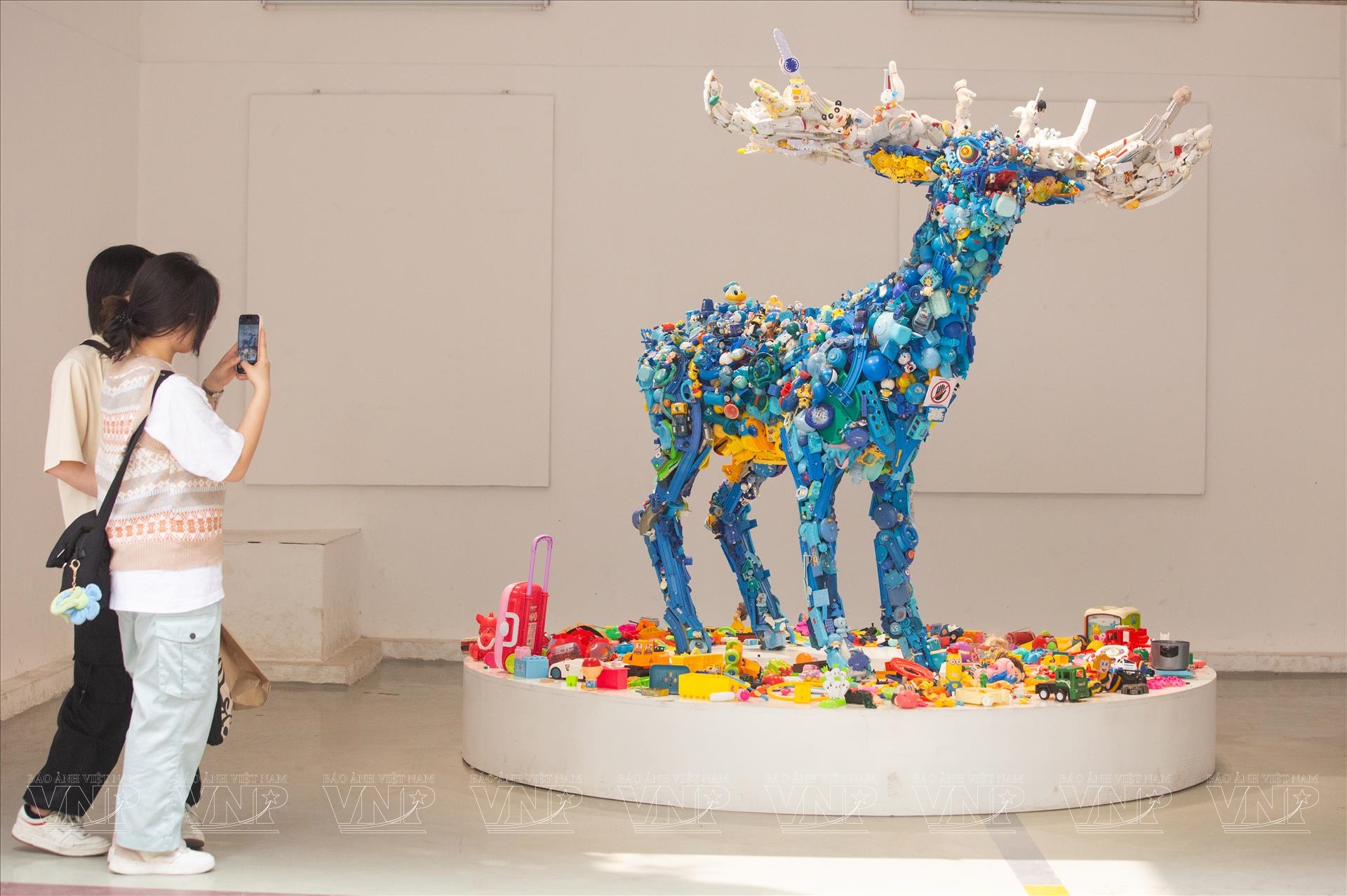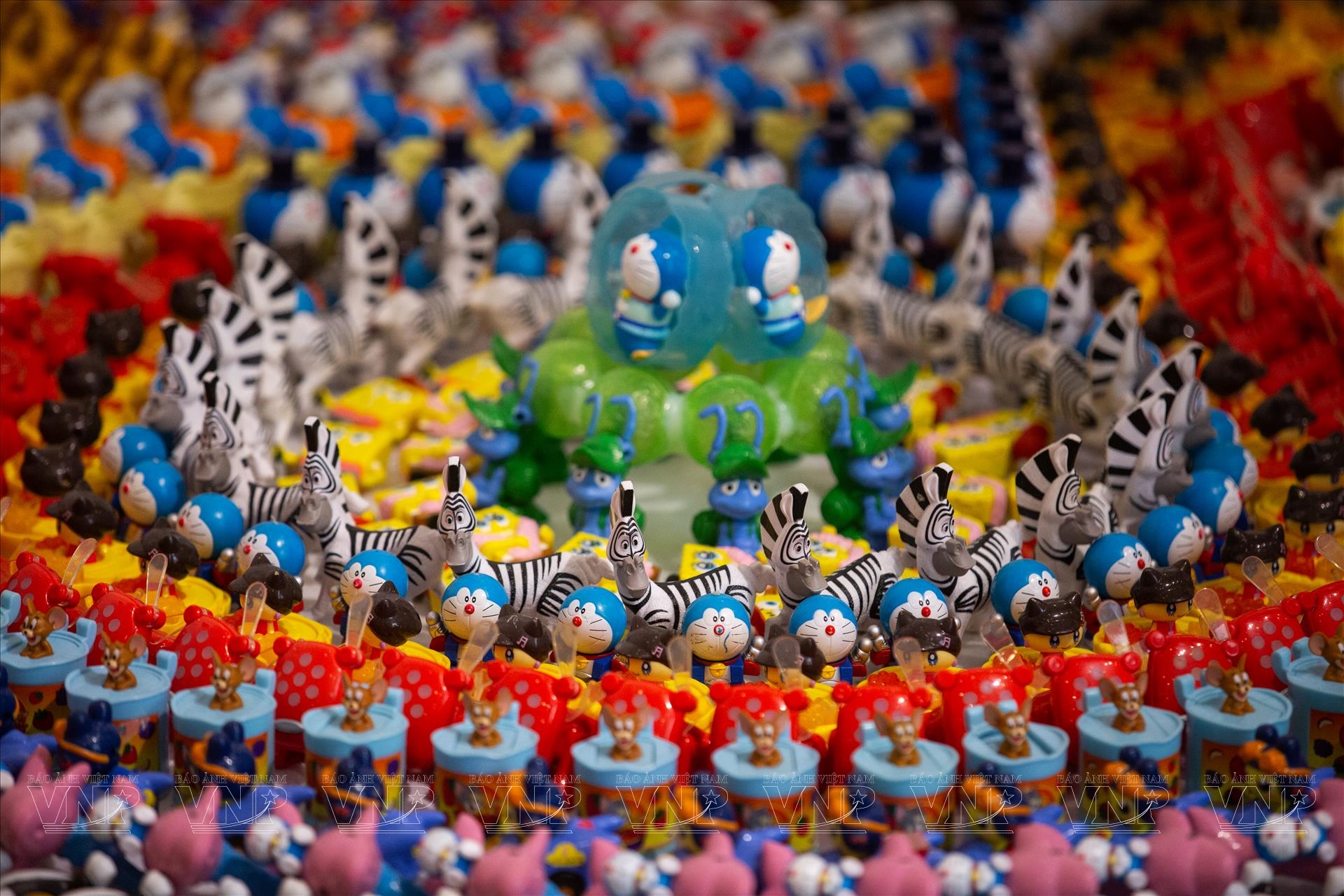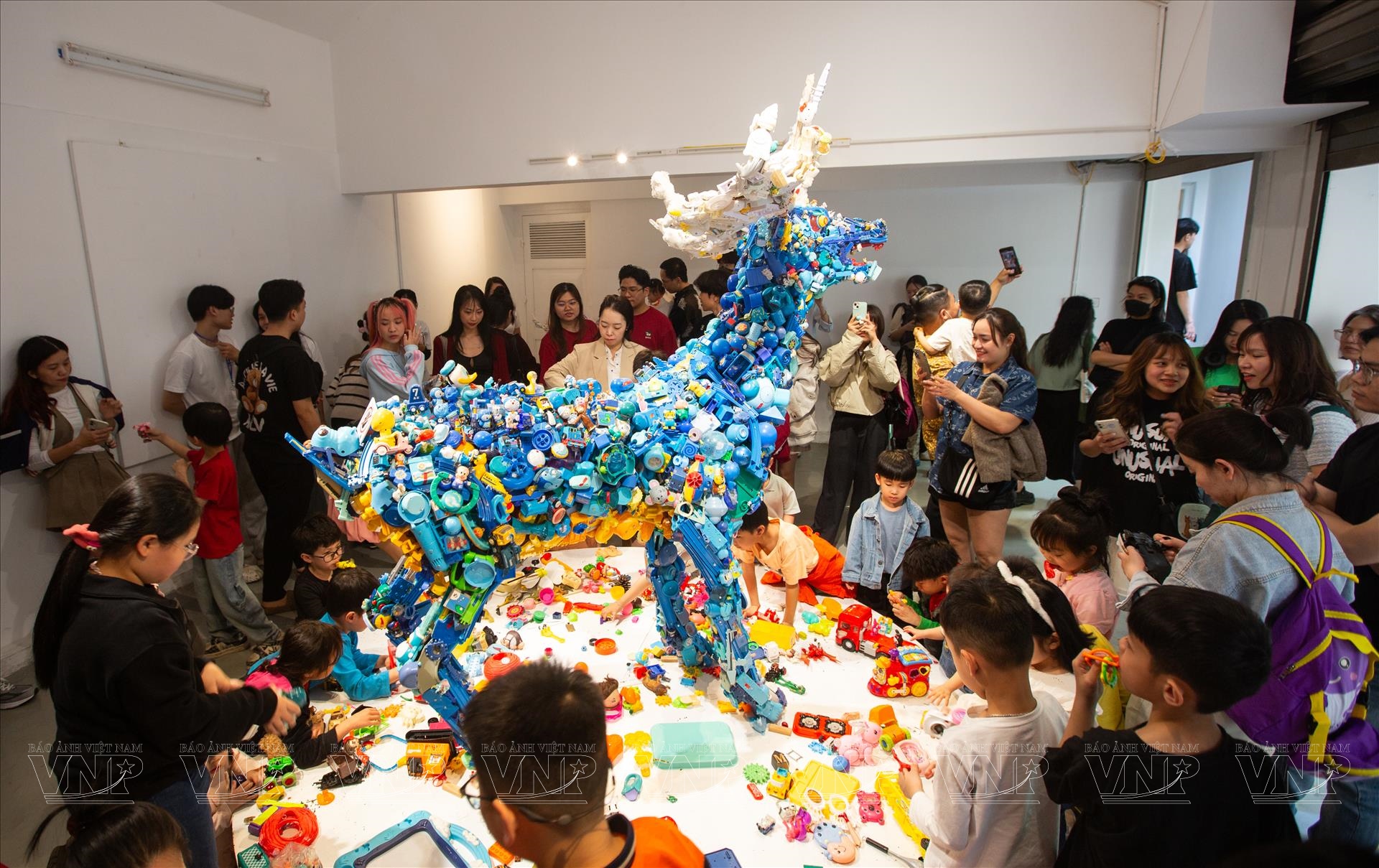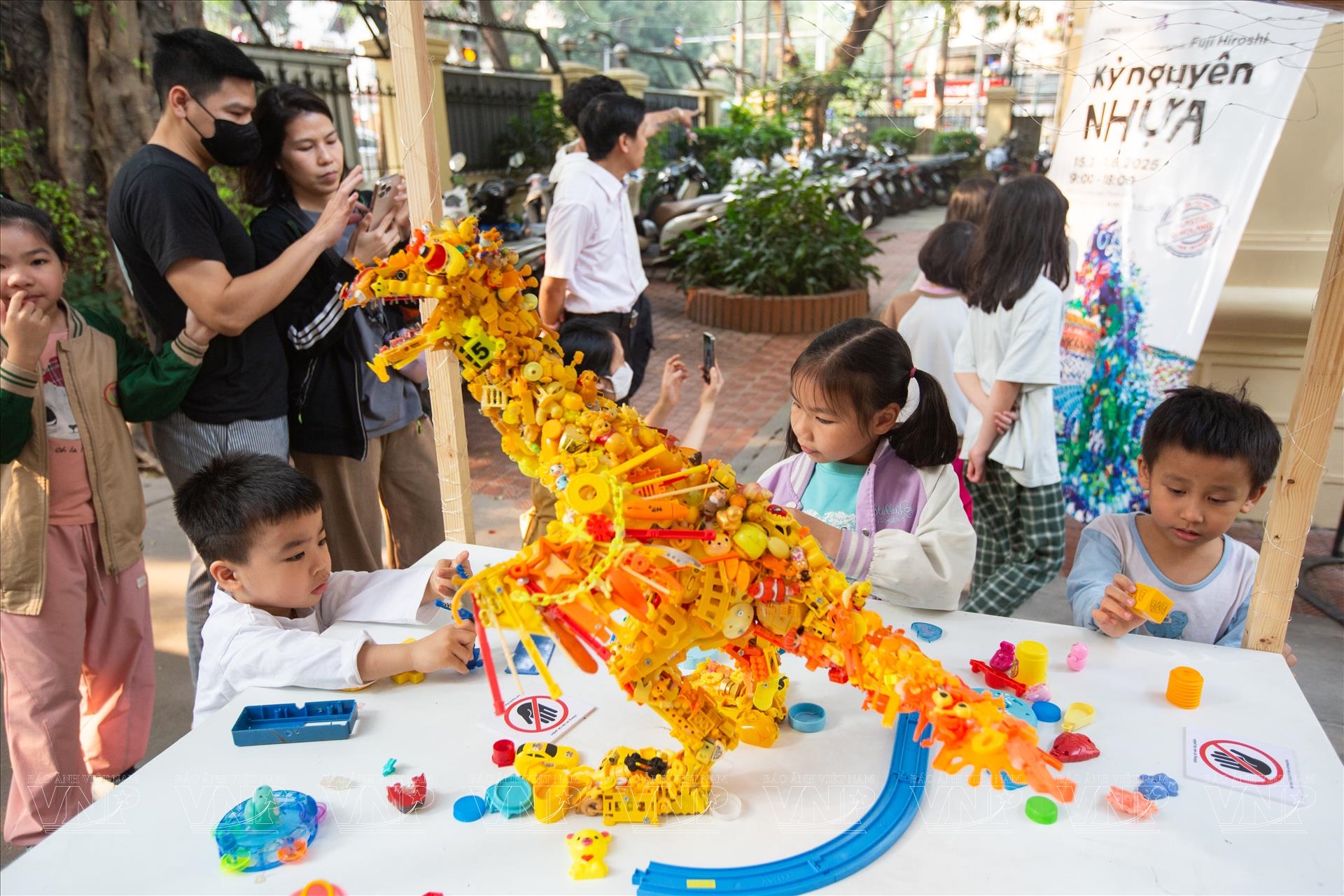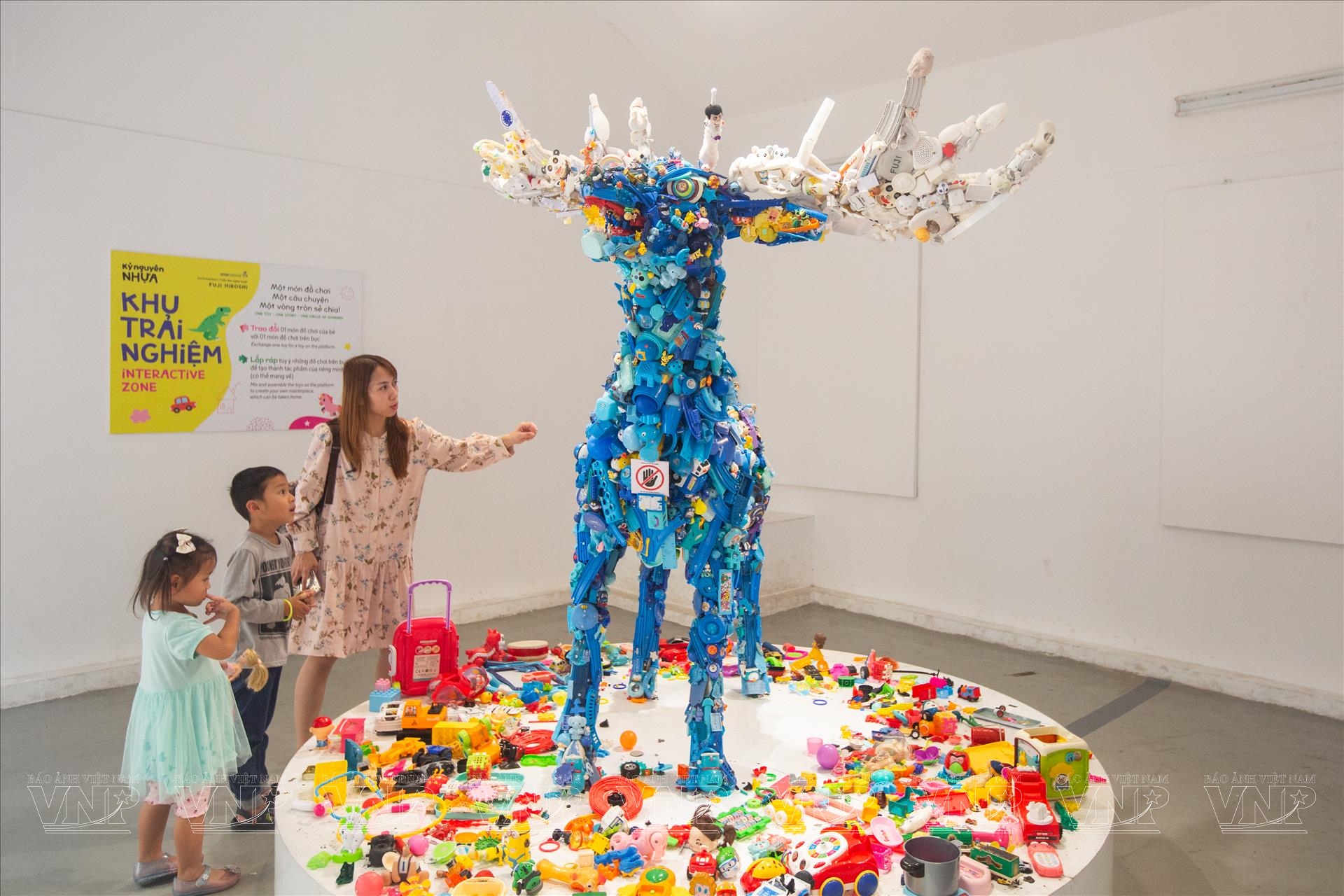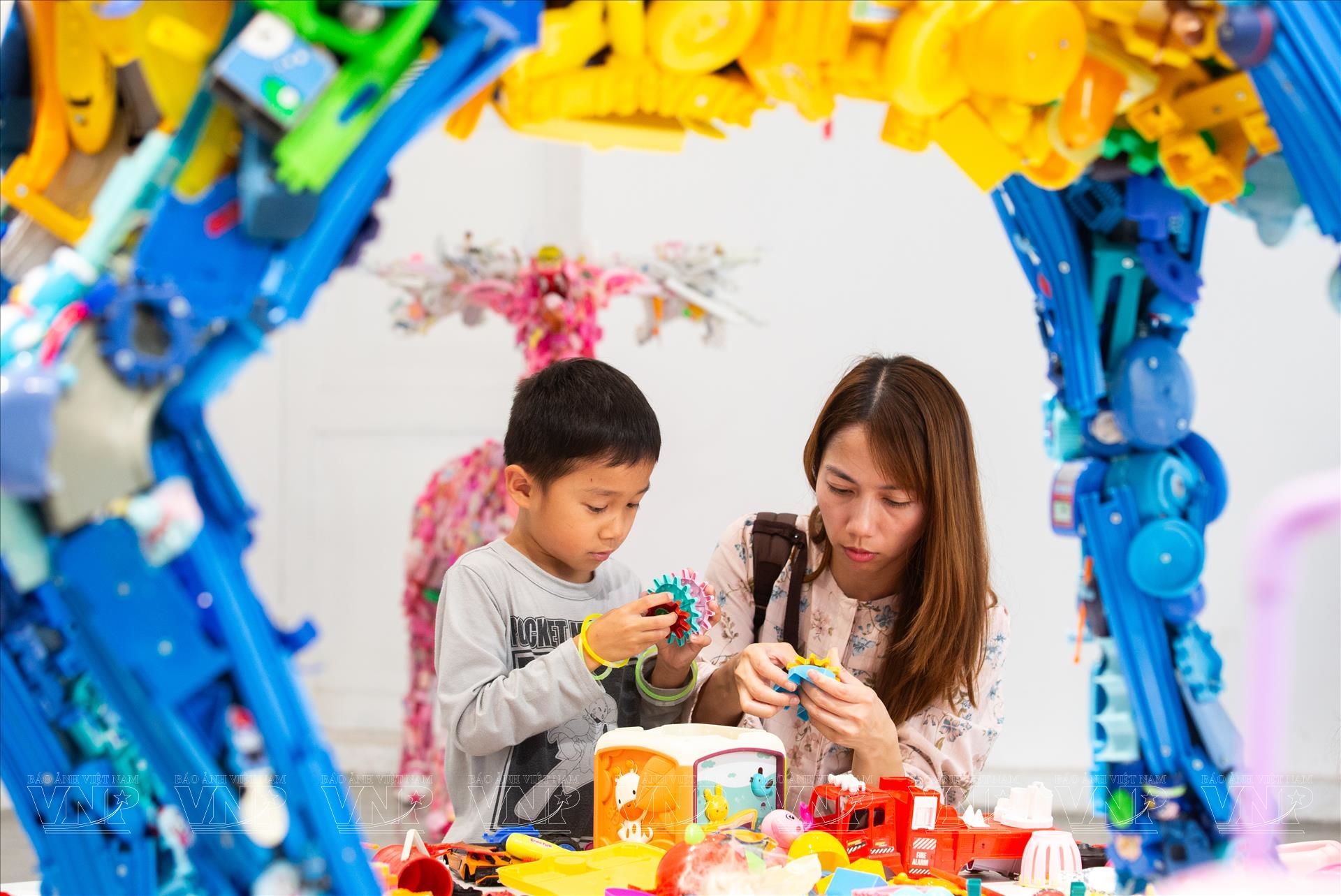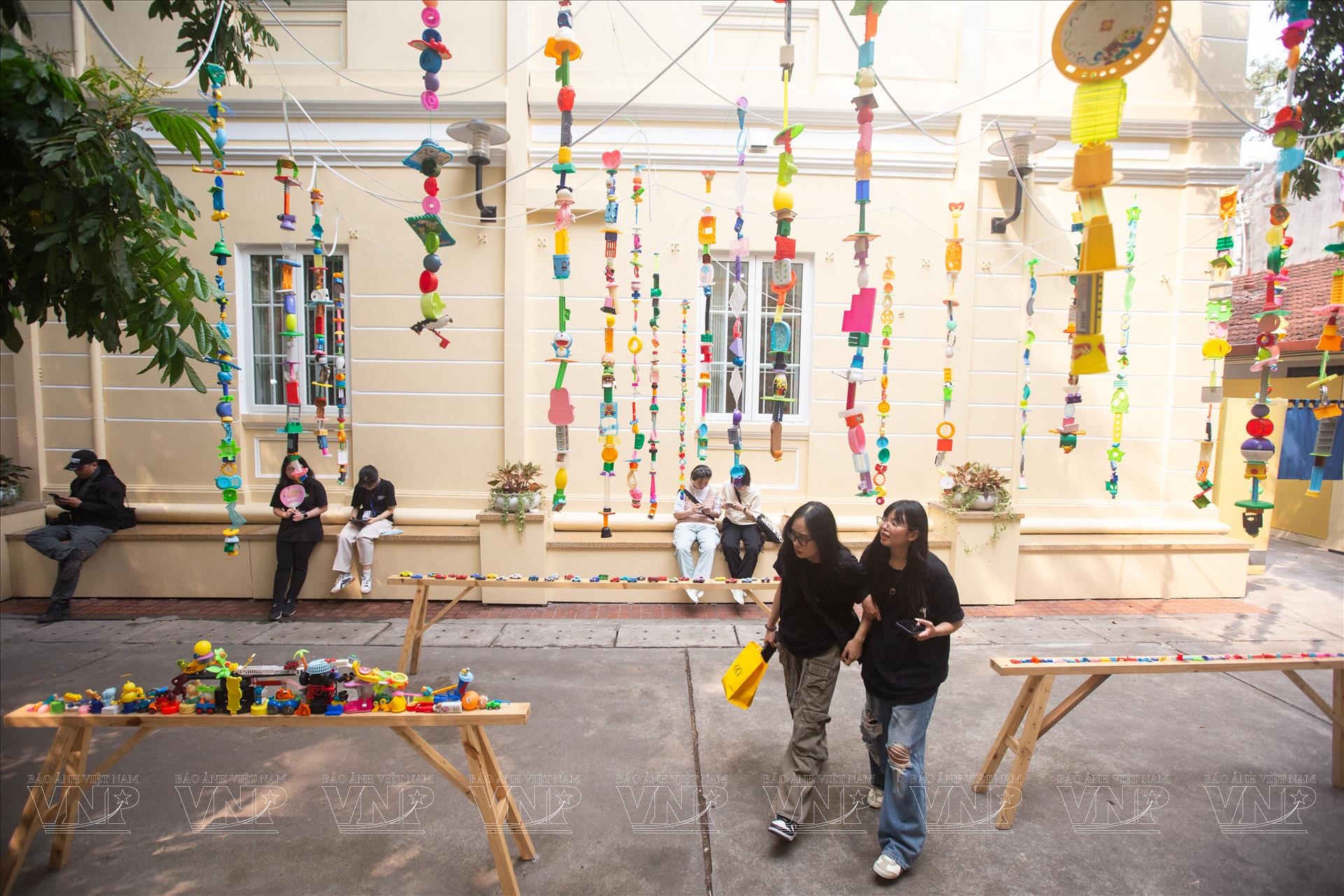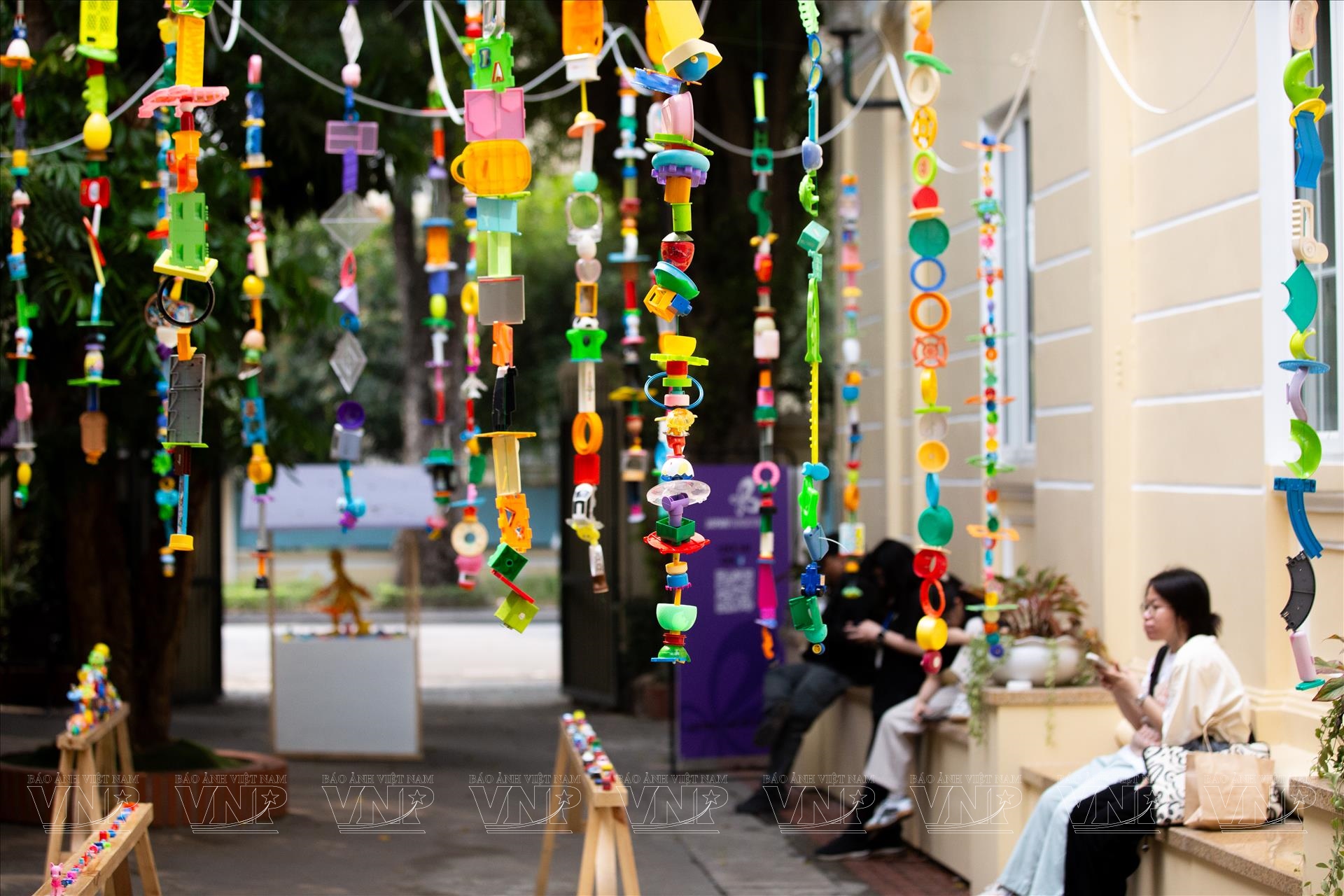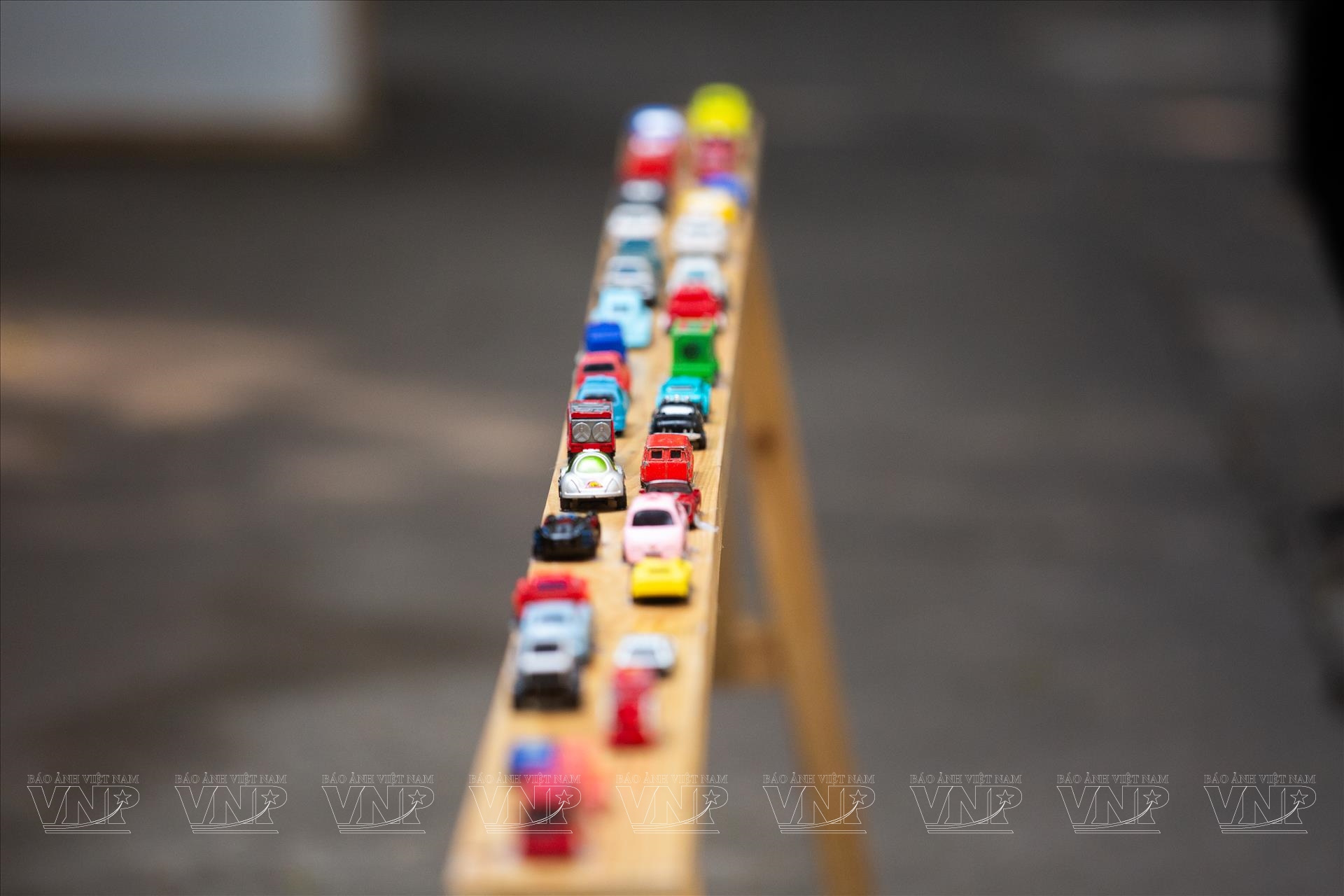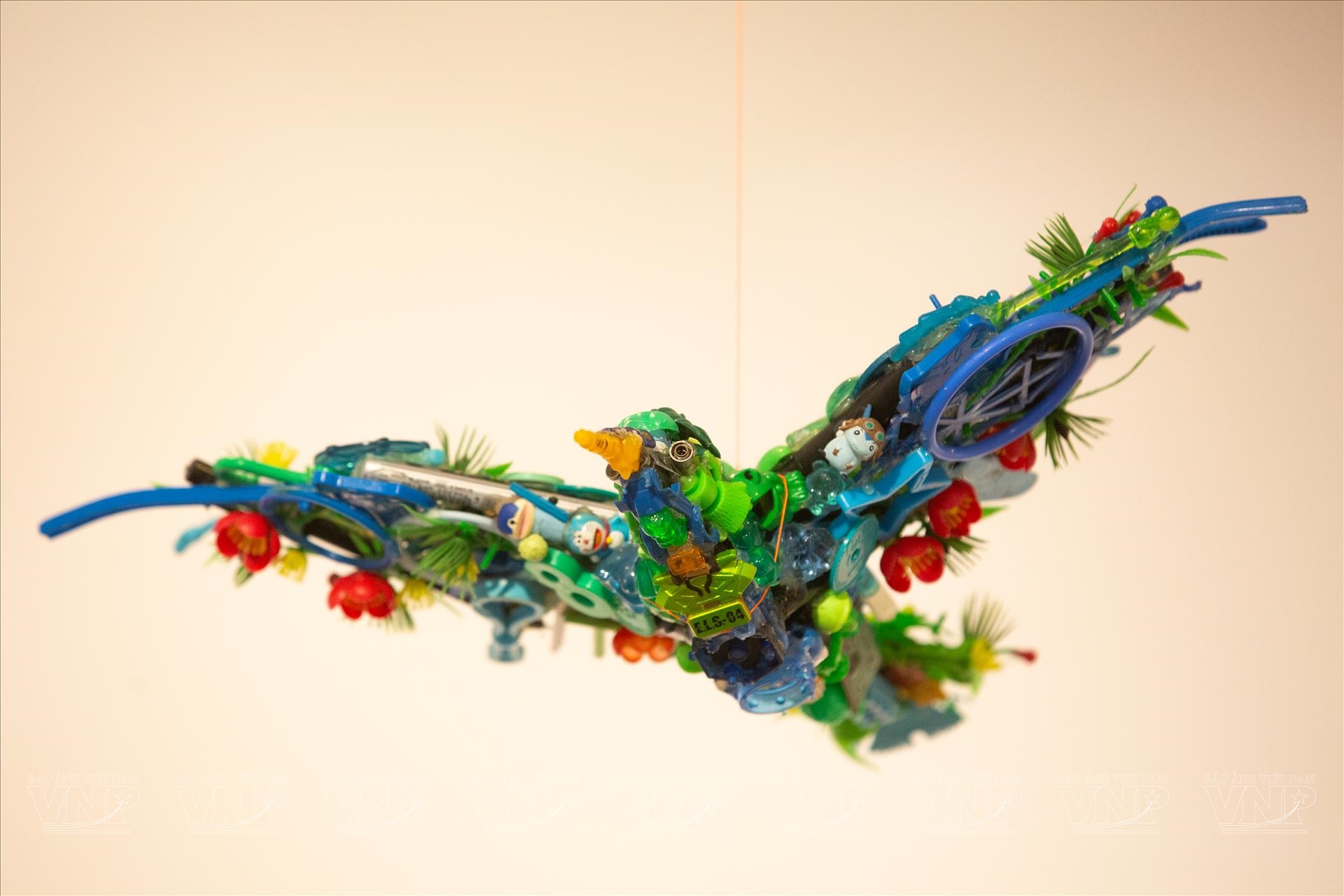"Plastic Dinoland"- Waste is Transformed into Art
In an era increasingly defined by the pervasive threat of plastic waste to people’s living environment, the Japan Foundation Center for Cultural Exchange in Vietnam has offered a refreshing and inspiring perspective through the "Plastic Dinoland" exhibition. More than just an art display, this event serves as a powerful reminder of the individual responsibility we all share in protecting the planet, particularly for the sake of future generations.
The exhibition's centerpiece is a captivating collection of works by the acclaimed Japanese artist Fuji Hiroshi. Through his extraordinary creative vision, he has repurposed discarded toys into highly engaging and educational art. To bring these intricate pieces to life, Hiroshi collected over 50,000 used toys from children across Japan.
"Each toy holds the story and memories of a child. By bringing them together, I am not just creating art; I am also telling the story of a generation," said Hiroshi at the exhibition's opening. "I want to show everyone that 'waste' is a concept we humans define. With a creative eye, anything can become valuable".
Hiroshi's artistic process begins with collecting these forgotten treasures through campaigns in Japanese schools and communities. Each toy undergoes careful cleaning before being sorted by color, size, and material. He then designs the structural framework for his artwork, embarking on the painstaking process of attaching each toy in its precisely chosen position. This stage demands immense patience, often requiring months to complete a single piece.
The exhibition's most striking feature is undoubtedly the "Jurassic Plastic" collection – life-sized dinosaur models ingeniously constructed from thousands of plastic toys. Standing before the towering, three-meter-tall T-Rex, assembled from over 5,000 repurposed toys, many visitors could not help but gasp in amazement. Toy cars, dolls, building blocks, and a myriad of other playthings have been cleverly arranged to form prehistoric creatures that are remarkably vivid in every detail.
A significant aspect of the "Plastic Dinoland" exhibition is its educational approach, delivered through the engaging medium of artistic experience. Rather than presenting dry statistics on plastic pollution, the exhibition introduces environmental issues to visitors, especially children, in a visually compelling and emotionally resonant way.
The "Small Actions, Big Changes" area provides a hands-on experience, allowing young visitors to create their own small artworks from old toys and used plastic waste. Guided by volunteers, children not only unleash their creativity but also absorb valuable lessons about recycling and environmental stewardship.
The exhibition's impact extends beyond students, capturing the attention of policymakers and businesses alike. Several toy manufacturing companies in Vietnam have begun exploring environmentally friendly materials after seeing the exhibition. Representatives from the Ministry of Agriculture and Environment also visited, expressing their strong support for the exhibition's important message.
More than just an environmental art event, the "Plastic Dinoland" exhibition serves as a cultural bridge connecting Japan and Vietnam. Through Fuji Hiroshi's captivating creations, Vietnamese audiences are given the opportunity to learn about the spirit of "Mottainai" – a core Japanese philosophy centered on cherishing resources and avoiding waste.
The exhibition has effectively conveyed its central message: "When waste becomes art, we can transform our perception of the value of materials and our individual responsibility towards the living environment"./.
Story: Cong Dat
Photos: Khanh Long/VNP
Translated by Hong Hanh
